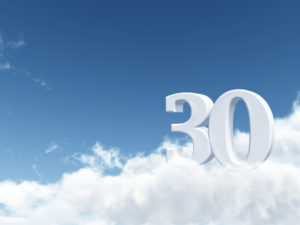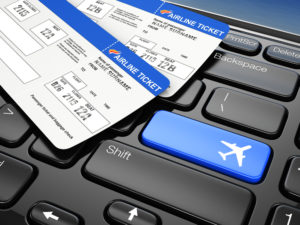On the bright side one can appreciate the try to get several travel technology companies to work together on the project. There is no need to remind that the airline industry has been through an intense period. The tough battle between airline companies and global distribution systems about direct connects and the display of ancillary revenues deeply affected their relationship. Still, travel agencies, GDSs along with IATA members are combining their efforts on developing a new standard. On the dark side, one can be surprised by the number of different XML standards appearing nowadays without having a global one. We have actually three organizations working on new standards.
The IATA: The International Air Transportation Association is an international industry trade group founded in 1945 that has the mission of guiding and serving its 240 airline members from 150 countries across the world. As part of it, the organization provides professional support to the whole industry with travel technology and expert services; the standard project being one of them. According the IATA’s publication, that new standard is meant to guide the industry by providing “a single industry standard platform, connecting airlines, agencies, and consumers and facilitating the correct information flow”. Though it is still a work in progress, it should be adopted by the airlines beginning of 2013.
Open Travel Alliance: OTA is a not-for-profit trade association, founded by travel companies. It includes airline members but also distribution service providers, technology providers and other members of the travel industry like car and hotel companies. The organization aims at promoting the creation of electronic message structures to facilitate communication between its member’s systems. In order to do so, it develops services like the Open Travel 2.0 standard which is meant to introduce “a common set of standard vocabulary-based components from the travel industry from which XML messages are constructed”
The Open Axis Group is a non-for-profit organization founded by North American Airlines and the ATPCO. Its primary goal is to promote the use of XML as the optimal and only electronic messaging structure for airline system connectivity worldwide. As a result of this process they defined the AXIS Group Distribution 2.0 Model as well as the Open AXIS Group Standard for XML connectivity, reflecting the optimal way of encoding this kind of information according to their understanding. The XML schema used by the Open Axis Group was first introduced by PASS Consulting in the year 2000 in order to access the content and inventory of different GDSs via one unified interface. Some of the GDSs even introduced PASS’s technology in their own products. All members of the Open Axis Group have adopted these definitions – among them major Northern American carriers such as American Airlines, Delta, United, US Airway, Air Canada, but also European carriers such as Air France, KLM, and others, which also are part of IATA team. Consequently one can argue that this is already a standard that’s been proven for over a decade.
So here we are, with different organizations formed by the same members, creating different standards using the same travel information technology and with the same target. At first glance, this scenario seems a bit confusing for airline carriers that have to make the best choice out of the many existing standards supporting their sales process. Wasn’t it the primary objective of standardization to make things easier and to create a global system that could be used by anyone? So let’s have a closer look on how different standards evolve and what are their purposes.
A Shared Vision
If we refer to the market structure theory, monopolies are characterized by a lack of economic competition to produce a good, a service or a viable alternative to those already existing. It is also a situation in which a company gains the ability to raise prices and to exclude competitors. Both dominating standards, Open Axis and IATA claim the right to innovate in the travel industry, thus fighting the monopoly of the main GDSs. More than being just a way of data encoding, these standards are also an efficient distribution system that supports airline merchandizing strategies and helps to reduce what is now called the Distribution Gap. As IATA states, “one estimate by LEK Consulting, however, suggests that airlines could be missing out on as much as $50 billion by not offering a full suite of products through the GDSs.”
Boosting Competition
Getting new players into the game can only have a positive impact on the industry and for customers, as competition among different organizations is an interesting innovation engine in general. The following factors enhance competition. From the airline carriers’ perspective, their bargaining power is nothing but improved by substitute solutions enabled by standards that perfectly meet their needs. Moreover their dependence on the GDSs is greatly limited by their control over the distribution of ancillary products in this case.
These developments gave some incentive to the GDSs, who in turn came up with new solutions. In reaction to IATA’s declarations, Sabre’s senior vice president of marketing, Chris Kroeger, replied: “Our technology environment includes over 8,000 open-system servers with an average age of less than three years, processing over a billion Web services and XML transactions a day with sub-second response time”. IATA and Open Travel are inclusive of distributor actors but cooperation between needs to progress. In recent declarations Kroegger reasserted Sabre’s commitment to standardization that is for them the best way to lower costs and improve productivity. However he doesn’t mention IATA nor Open Axis standards. Besides promoting Sabre services, it is not clear if he is not only supporting Sabre’s standard, which per definition cannot be considered a standard if it is only used by one player. “Recently, Sabre was the first GDS to provide an end-to-end merchandising solution for airlines using industry technology standards.” Competitors like Farelogix may therefore wonder why it took them two years to develop it…
Significant Benefits for Customers
It is not unusual that customers purchase a ticket online thinking that it includes the whole service during the flight. However, in some cases they are negatively surprised at the check-in to see that they have to pay for options that used to be included once, such as pillows, ear phones, or blankets. Using a globally shared data model will allow a better transparency in pricing and a fair customer treatment, no matter if they purchase their flight directly from airlines or via indirect distributors.
Some may argue about the lower level of service this process would potentially imply, but it will actually bring significant benefits to end-users. Truth is that the lower level of service is just a compensation for the increased running costs airline companies are facing these days (like the price of jet fuel). Supporting unbundling strategies will enable the price of the basic offer to be reduced or increased at a rate lower than the increase of the production costs. Furthermore, travelers today have a larger choice in selecting their booking options than a decade ago. The new distribution technology will allow them, according to IATA, to increase the value added to the end users allowing them to customize their journey according to their needs and budget. Also they will be offered many more services and products.
Which Will Become the Standard in the Industry?
Let us first take some distance from the travel industry to see how other industries such as mobile communications cope with standards.
“There was GSM in Europe, TDMA, CDMA along with a minor presence of GSM in Northern America, and all these countries used different frequencies which lead to the fact that mobile phones did not work anymore once you left your continent. Eventually technology fixed the problem by putting 3-4 different high frequency modules into one phone which supported different standards – however GSM was adopted by most countries and eventually won the race of standards. Thus, it is not rare that you cannot immediately create one global standard – and users will decide which one the like best”, highlights Michael Strauss.
A few similarities can be spotted between the battle of the two main mobile communication standards (GSM and CDMA) and travel standards.
For mobile communications, technology made it easy for their provider to “own the customer”, making it really difficult to switch from one to another. With GSM, phones have a removable SIM card that can be transferred from one GSM phone to another one (regardless of the carrier) but won’t work with CDMA. Similarly, CDMA phones are locked to one network. The switch to another one is only possible if approved by both the old and new carrier. American carriers – and therefore end users had to choose which standard to support and to which one of the networks to stick. But now, with cross-border businesses, more people travelling around the world, and phones sold unlocked, it is a big deal to be limited to GSM or CDMA. As mentioned by Michael Strauss, technology fixed the problem in the past by using multi-band technology.
This situation can be compared with the increasing number of standards in the travel industry, the lack of gateways connecting them, and the alternative solutions offered by travel technology providers. No matter what and how many standards evolve, cross-platform providers such as the PASS Consulting Group offer interconnectivity middleware like XX/1 to interact with the different standards in uniform way. In doing so, the different parties interested in booking and various other interactions do not need to worry about the standard used.
In the mobile communication industry, mobile phone standards reached a point where it is not easy to find a neat difference among them – like it is now difficult to see how Open Axis and IATA standards differ. With GSM and CDMA, both technologies include the same features (multimedia messages, high speed internet, video etc.). GSM truly differentiates its standard and takes the lead, with its ability to adapt to globalization. It actually scores with an easy implementation and the facility to be integrated to existing technologies. Besides it benefits from a huge influence: it is used more or less worldwide with a global market share of 80% versus 10% for CDMA.
GSM and Its Strenghts
Interoperability, influence, and the capacity to adapt to current customers’ needs are the key strengths of GSM. If we apply the definition of a standard – something considered to be an approved model by an authority or by general consent – to the airline industry, we can extend the concept to call the three main GDSs Sabre, Amadeus, and Travelport standards. They all have been proposing standards, which are used by the airline industry for now a long time. Notable difference is that airline’s standards keep the possibility to interact easily while GDSs are based on a strategic lack of interaction. We have then, not less than 6 standards in the travel marketplace targeting about 400 airline carriers. The truth is neither black nor white. The more standards there are, the more competition we have – and competition drives innovation. However if there are too many standards there is nothing you can truly build on, which prevents innovation. But who in the travel landscape has the GSM key strengths?
So far, we have seen that IATA, Open Axis Group, and Open Travel share pretty much the same motivation and develop pretty much the same thing. We can therefore wonder what the point in having different standards is. Just like their entry in the market stimulated the industry, the rivalry between them is opened to discussion.
“It doesn’t matter if there is a standard or not – as long as Systems are open and not restricted by business protectionism that prevents innovation. In today’s world, technology will always find a way to make it work. Translation from one language into another one – communication between machines – is not a challenge anymore and probably easier and definitely faster done than bringing five different standardization organizations and even more individual player under one umbrella. Today’s machines are easier to unify than today’s people who are so concerned of losing their competitive advantage. Instead of reinventing themselves again and again and focus on the user/traveler, the preferred option is to secure market share with all methods which is not necessarily in the best interest for the actual client.”, says Strauss.
What are these organizations doing to unify their standards? One past example shows the possibility to cooperate between the airline standards. Open Axis Group and Open Travel signed an agreement to work together to align their XML standards. Indeed, Jim Young the Open Axis Director highlighted “Open AXIS has established a proven XML schema as the baseline for its standard and we will work closely with our members and the Open Travel Alliance without duplicating efforts, together, we will adopt, promote, enhance and maintain this schema to create a robust industry standard that addresses the needs of both the supply and demand sides of the travel supply chain.”
Supporting the IATA
Is such agreement possible with the IATA? So far, Open Travel Alliance and Open Axis Group announced their intention to support the IATA in the process of setting up a new standard for airline distribution. By now, the 3 organizations are collaborating to define best practices, a common vocabulary and namespace conventions which is positive, but how they could work all together on a unique standard is to make clear. Although IATA, Open Axis and Open Travel seem to agree on working together, there are divergences of opinion about which standard to support. According Eric Leopold, IATA’s head of passengers “IATA had yet to determine if it would build its own XML schema for distribution standards or embrace, integrate and adopt standards already developed by the likes of Open Axis and Open Travel Alliance.” Nevertheless Young recently declared that he expects Open Axis standards to be fully supported and adopted by IATA.
Additionally, while most of Open Axis members adopted its standard, there is a long way to go before IATA members, about 240 airlines and 84% of global air traffic, do the same (considering the option of one unique standard). Conflicting interests and commercial agreements between airlines, GDS, travel agencies is likely to jeopardize their implementation. Moreover the standards are developed by and for airlines however their position in the travel value chain is a point to clarify. The claim to be inclusive to any type of distribution channel, direct to an agency or via the GDS network doesn’t prevent other actors to be suspicious on them being actually developing a distributor by pass.
Standards are certainly the right path to take for the industry. Presenting it as a huge novelty, not so sure. XML structures have been used for over a decade by many players to unify GDSs which contributed to make it being a standard. Who will be the industry standard? Remember the key strengths of GSM the communication standards: Interoperability, influence, capacity to adapt to current customer needs. The airline standards appeared to cope with economic pressures in order to create a cost effective set of communication technologies. This standardization ameliorates business to business communication between different travel applications as well as it satisfies the carrier’s need of an efficient merchandising. Regarding to the influence, that is the heart of the battle. Airline standards gather a huge part of the possible users, but not so many have already adopted it unlike the GDSs that are entrenched. It will be up to the users to decide who serves them best and thus who wins the race.
Image by muratart





This Post Has One Comment
good morning
I suggest that NDC/XML NOT CLEARLY explained ,
the simplicity is one of the best kind of marketing , airline industry is so strong ,
ON-LINE internet , LOW cost carriers have changed the whole status of SCHEDULED IATA carriers creating a lot of CHAOS . The introduction of NDC still vague .
I think in my opinion IATA and its members must save and improve the industry ,
cutting costs is not a solution , all current GDSs generated billions over the back of the international carriers instead of the LATTER enhance revenue by applying EASY , SIMPLE standard of selling
the GOAL IS PROFOUND very clear – AIRLINERS SURVIVE at a minimum profit in order stay alive